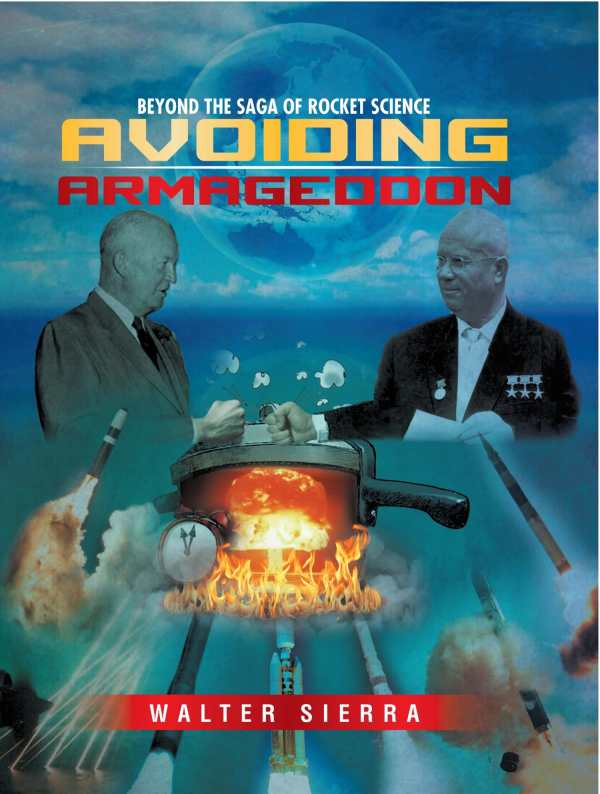Avoiding Armageddon
Beyond the Saga of Rocket Science: Book 2
Avoiding Armageddon dramatizes the thrilling, sometimes devastating historical events that were shaped by mid- to late-twentieth century rocket science and nuclear engineering advances.
The second book in a scientific series, Walter Sierra’s Avoiding Armageddon is rich with information on the development of rocket science in the twentieth century.
Covering the bombings of Hiroshima and Nagasaki, the Cuban Missile Crisis, the Moon race, and the many satellites and probes launched throughout the twentieth century, this volume covers the “‘Golden Age’ of rocketry” (the 1960s-1980s), when rocket science and nuclear engineering were at their zenith. It discusses how competition over space exploration was influenced by the Cold War, with the United States and the USSR pouring funds into developing nuclear warheads and satellite surveillance, all in a show of political domination and military prowess. And it argues that complex Soviet failures led to disasters reflective of flaws in the nation’s political structure, while the US’s success with landing on the Moon led to a brief decline in space exploration for both nations.
The text hones in on Dwight Eisenhower as a major player in the development of rocket science in the US, alongside engineers including Sergei Korolyov, Vladimir Chelomei, and Mikhail Yangel in the USSR, who designed and built rockets intended for a Moon landing. It stretches its material to include their biographies, putting their achievements into historical context. However, its use of conversations (some real, some imagined) to demonstrate the significance of these people’s endeavors reflects some poetic license.
The book also dramatizes historical and scientific anecdotes, as where it describes the events of Castle Bravo, an American nuclear weapons test in the Marshall Islands in 1954. Within the book, historical figures who were involved in the test discuss its particulars in casual language; the book uses minute details to round out the event and its players. Though some of this work is fictionalized, the highlighted catastrophic results of the test are impactful because of the book’s narrative style. However, some of the book’s details extraneous: here, the scientific director of Operation Castle smokes Camel cigarettes, for instance. Still, the stories themselves are involving, and usefully instructive where they focus on facts.
When the book becomes more scientific and expository, its work is less approachable. It clarifies its technical terms with varied success: some definitions lean on additional scientific terminology, leaving lay readers behind. Further, the large format of the book undermines the accessibility of its work. Its two-column layout more than doubles its already dense and lengthy content. Its subsections are more digestible, but the book’s major chapters still span one hundred pages or more. Some pages are busy with myriad photographs and diagrams, and some of their material is not referenced in the text. These illustrations are of varying quality, too: many are blurry from being enlarged. And some of the charts and figures are too dense with specialized information to be of general use.
The book merges science with history well, though, ably putting technological advances and failures into sociopolitical context. As this volume covers events in the mid- to late-twentieth century, it ends with an unceremonious nod to Putin’s presidency, using this as a segue to the next edition of the series.
Avoiding Armageddon dramatizes the thrilling, sometimes devastating historical events that were shaped by mid- to late-twentieth century rocket science and nuclear engineering advances.
Reviewed by
Aimee Jodoin
Disclosure: This article is not an endorsement, but a review. The publisher of this book provided free copies of the book and paid a small fee to have their book reviewed by a professional reviewer. Foreword Reviews and Clarion Reviews make no guarantee that the publisher will receive a positive review. Foreword Magazine, Inc. is disclosing this in accordance with the Federal Trade Commission’s 16 CFR, Part 255.

